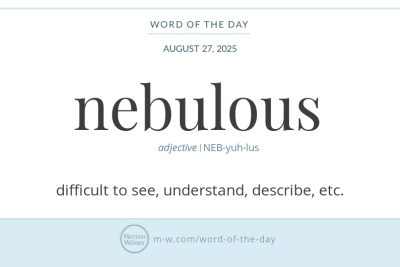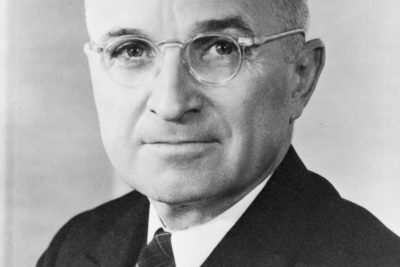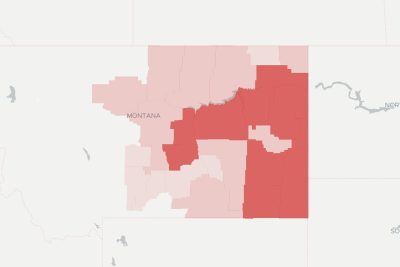
What defines Boston's colonial roots and harbor legacy

Boston is a city steeped in history, with its **colonial roots** firmly planted in the early days of America. This iconic city served as a **crucial site** for revolutionary actions and political upheavals that shaped the nation. From the **Boston Tea Party** to the **Boston Massacre**, these events reflect the profound impact of the city on the fight for independence. Today, Boston is recognized not just for its **historical significance**, but also for its rich heritage and cultural evolution, particularly influenced by its **harbor legacy**. This unique relationship between Boston’s colonial past and its bustling harbor has fostered an environment that is both a homage to its history and a beacon of modernity.
As we delve deeper into what defines **Boston's colonial roots and harbor legacy**, we will explore significant historical contexts and influential immigrant groups, particularly the Irish, whose impacts on local politics and culture are undeniably profound. The transformation of Boston from a predominantly colonial town to a vibrant city marked by **diverse communities** provides insights into the resilient spirit of its residents. The **Radcliffe Institute for Advanced Study** exemplifies this commitment to progress and education, serving as a modern hub that reflects on Boston's past while looking toward its future. In examining these intertwined narratives, we can better understand how Boston continues to enact its rich heritage while embracing the changes of contemporary society.
The Historical Context of Boston's Colonial Roots
Boston's establishment in 1630 marked the beginning of its journey as a **significant colonial city**. Originally settled by Puritans from England, the settlement was built around a thriving harbor that facilitated trade and commerce. This harbor was not merely a geographical feature; it was instrumental in establishing Boston as a critical point for **import-export activities** in colonial America. The city quickly became known for its role in maritime trade and was a hub for **shipbuilding** and other commercial enterprises.
The **political landscape** of colonial Boston was characterized by a resistance to British rule, culminating in events such as the Boston Tea Party in 1773. Citizens of Boston, driven by desire for liberty, increasingly opposed **British taxation** and imperial policies. This spirit of rebellion laid the groundwork for what would become a pivotal chapter in American history— a self-identified **colony** actively seeking independence. The history of Boston is not only a testament to its political resilience but also reflects how its **geographical positioning** by the harbor opened pathways for social and economic development that resonated throughout the establishment of the United States.
The Role of the Harbor in Shaping Boston's Identity
The nexus between Boston's colonial roots and its **harbor legacy** cannot be overstated. The **Boston Harbor** played an essential role in the economic prosperity of the city, facilitating trade routes that connected New England with the rest of the world. As a **major port**, Boston became the gateway for goods, ideas, and cultures, leading to a diversified population that would shape the essence of the city. The harbor's strategic location allowed Boston to **flourish**, making it an essential player in both the colonial economy and the broader revolutionary narrative.
Trade through the harbor fostered relationships across global markets, contributing to the growth of a merchant class that thrived on the transatlantic trade. As ships docked at the bustling wharves, goods such as rum, molasses, and slaves were exchanged. This intricate web of commerce not only contributed to the city’s wealth but also led to the formation of intricate social networks. These networks would eventually enable immigrants, particularly the Irish, to find their footing in a city that was always in flux, further enlivening an already vibrant tapestry of culture that characterized **Boston's identity**.
Immigration Waves: Irish Influence on Boston's Politics
The arrival of Irish immigrants in the mid-19th century marked a watershed moment in Boston’s history. Driven by **famine** and economic hardship, thousands of Irish citizens flooded into the city, significantly altering its demographic landscape. The Irish faced intense **discrimination**, but over time they carved out a significant presence in local politics and society, helping to reshape Boston’s governance in profound ways. As they settled in neighborhoods like South Boston and Charlestown, they formed a strong community that thrived on solidarity and mutual aid.
The burgeoning Irish community quickly recognized the power of the vote, and through grassroots organizing, they began to play an instrumental role in city politics. **Political leaders** emerged from this **immigrant class**, many of whom were steeped in the struggles of their communities. They mobilized the vote amongst their constituents, offering favors in return for political support. This led to the election of several Irish mayors, most notably **James Michael Curley**, who dominated the city’s mayoral office for nearly four decades, making significant changes in favor of the Irish populace.
The Rise and Fall of Irish Political Dominance
James Michael Curley’s rise to power marked the culmination of Irish political influence in Boston. The Curley administration saw an increase in the representation of Irish Catholics in various levels of government, and policies began to reflect the changing demographics of the city. However, this dominance was not without its challenges. As **social tensions** simmered between Irish Catholic Democrats and Protestant Yankee Republicans, political rivalries intensified.
The Irish began to face pushback from established Yankee elites who viewed the new political dynamics as a threat to their way of life. Economic decline throughout the mid-20th century and challenges related to infrastructure and housing exacerbated these tensions, driving urban decay in various neighborhoods. Addressing these socioeconomic issues became paramount as the Irish political leadership navigated a changing landscape marked by **economic instability** and community strife. With Curley's defeat in 1949, Boston's political scene began to shift again, leading to the emergence of a more moderate approach under a new generation of Irish mayors.
Cultural Tensions: Irish vs. Protestant Dynamics
The cultural dynamics between the Irish and Protestant populations in Boston were complex and often turbulent. The **Irish immigrants** faced deep-seated prejudice from Protestant settlers, which played out in myriad forms—from social marginalization to blatant discrimination. Anti-Catholic sentiment was prevalent, causing rifts that would shape community interactions throughout much of the 19th and into the 20th centuries.
Irish Catholics amassed into tightly-knit communities, often at odds with the Protestant populations. Events like the **Protestant-Catholic riots** reflected the underlying societal tensions as differing values and allegiances clashed. As Irish influence grew in Boston, these cultural rifts began to close somewhat, but remnants of strife remained. The political landscape became a battleground where cultural identity shaped allegiances and attitudes, further entrenching the divide. Yet, amidst this tension, a shared vision emerged—a pursuit for equality and community representation—and over generations, bridges began to be built between these communities.
Economic Changes and Infrastructure Challenges
The economic climate of Boston began to shift significantly in the post-war years, as **technological advancements** and changes in industry transformed the city’s workforce. The traditional industries that once defined Boston’s economy began to decline, leading to job loss and economic uncertainty for many families. These economic changes posed significant challenges, particularly for the Irish community that had risen to prominence during earlier decades.
With the decline of manufacturing jobs, many working-class residents faced unemployment and precarious living conditions. **Infrastructure issues** became more apparent, with aging buildings and transportation systems struggling to keep pace with the growing population. The city’s leadership began to grapple with the consequences of urban decline, initiating efforts to revitalize neighborhoods and stimulate economic growth. This period also marked a diversification of the economy, with emerging industries and fields adapting to the needs of modernity.
The Evolution of Leadership in Post-Curley Boston
Following Curley’s departure from the mayor’s office, Boston's leadership transitioned toward more moderate figures, many of whom strove for reconciliation and inclusivity amidst the evolving racial and economic landscape. These leaders recognized the need for city-wide initiatives to address the issues caused by **urban decay** and to promote social cohesion. New leadership styles emerged, focusing on effective governance and inclusive policies that reflected the diverse makeup of Boston’s population.
The cities needed leadership that could bridge fractures within the community, acknowledging the past without allowing it to dictate the future. Educational reforms and investment in public infrastructure became focal points as newer leaders engaged with the changing demographics of the city. The **Radcliffe Institute for Advanced Study** emerged as a key player in expediting educational and cultural dialogues, underscoring Boston’s commitment to progress and innovation while maintaining its rich historical lineage. This evolution of leadership marked a turning point in Boston’s ability to navigate through turbulent times.
The Struggles of the African American Community
As Boston transformed, the struggles of the African American community came to the forefront of the political and social dialogues of the city. Following the **Great Migration**, many African Americans settled in Boston, contributing to the rich tapestry of the city's identity while also facing significant barriers in the quest for equity. Discrimination and unequal opportunities posed hurdles that the community had to navigate in order to gain representation in Boston’s political and social scenes.
Community leaders tirelessly worked to secure better living conditions, access to education, and equal rights amidst systemic challenges. Despite facing resistance from segments of the population, the African American community persevered and began to carve out spaces of influence in Boston’s cultural landscape. Notably, their contributions were felt not only in civil rights movements but also in the arts, education, and local governance.
Racial Tensions and the Busing Crisis of the 1970s
The **1970s** marked a period of heightened racial tensions in Boston, particularly highlighted by the implementation of **busing** to integrate public schools. This controversial policy aimed to address the disparities in education faced by African American children in predominantly white neighborhoods. However, it led to widespread protests and resistance, revealing deep-seated racial animosities within the city.
The busing crisis became emblematic of the struggle for racial equality, as many white residents fought against the changes in their communities. Attacks and violence against African Americans became a tragic reality during this period, underscoring Boston's turbulent relationship with race and civil rights. Protests led by community leaders served to shine a light on the injustices faced by African Americans, generating national attention and prompting discussions around race relations in America. Though the busing era left scars on the city, it also ignited movements that fueled the fight for equality in education and beyond.
Boston's Transformation into a Culturally Rich Metropolis
Despite the challenges faced through crisis and conflict, Boston emerged from the tumultuous decades of the 20th century as a **culturally rich metropolis**. The convergence of various ethnic groups, particularly the Irish and African Americans, fostered a vibrant community that celebrated its diversity through **cultural events** and shared experiences. Boston’s landscape evolved to reflect its multicultural influences, producing theaters, museums, and music venues that infused the city with artistic expression.
The flourishing cultural scene is epitomized by events such as the Boston Arts Festival and the Boston Caribbean Carnival, celebrating the city's diversity and artistic contributions. Educational institutions like the **Radcliffe Institute for Advanced Study** further enriched Boston’s academic environment, serving as intersections for cultural exchange and innovation. This era of cultural renaissance marked a period of renewed hope as the city began to showcase its historical richness alongside its modern identity.
The Impact of the Boston Marathon Bombing
The **Boston Marathon bombing** on April 15, 2013, inflicted tragedy on the city and left a collective scar on its residents. The attack targeted one of Boston’s most cherished traditions, the marathon, which draws participants and spectators from around the world. In the aftermath of the bombing, Boston demonstrated a remarkable sense of resilience, as communities came together to support victims and one another in the face of adversity.
In many ways, the marathon bombing served as a test of Boston’s **character**, evoking memories of the city’s ability to withstand trials throughout its history. The solidarity showcased by residents reflected the very tenacity that city leaders and community members had fostered across generations. The enduring spirit saw Boston emerge stronger, with a renewed emphasis on security, community bonds, and the importance of diversity.
Balancing Modernity with Historical Legacy
As Boston navigates the complexities of modern development, it continues to honor its **colonial heritage** and rich historical legacy. Initiatives aimed at preserving historical sites, such as the **Freedom Trail**, ensure that the narratives of Boston’s past remain visible and celebrated. This balance of modernity with a commitment to heritage reflects the city's ongoing efforts to remind both residents and visitors of the events that shaped not just Boston, but America itself.
The perception of Boston today as a dynamic metropolis is intrinsically bound to the understandings of its past. The struggles for equality, the cultural crossroads, and the resilience exhibited throughout various challenges underscore a narrative of a city that evolves while holding tightly to the lessons of history. The **Radcliffe Institute for Advanced Study** symbolizes this intersection of past and future, where academic discourse fosters understanding of Boston’s ongoing journey.
Conclusion: Boston's Fight to Preserve its Colonial Heritage and Harbor Legacy
In summarizing the nuances of **Boston's colonial roots and harbor legacy**, it is evident that this city's identity has been shaped by ongoing dialogues between its history and modernity. The transformative impact of immigration, especially from the Irish community, has profoundly influenced political dynamics, social struggles, and economic development. Moreover, Boston's harbor remains a vital element that connects its residents to their maritime origins while providing a backdrop for cultural enrichment.
As Boston keeps evolving, the challenges faced—be it racial tensions, economic disparities, or tragic events—require a collective response from all communities. The history of cooperation and conflict serves as a reminder that **Boston** is not just a city of the past, but one of resilience and hope. It stands as a testament to the spirit of its people, ensuring that its diverse narratives are woven together in the pursuit of a vibrant, inclusive future. The commitment to **heritage preservation** and responsible development reflects the city’s understanding that true progress lies in honoring the complexities of its past while embracing the promise of tomorrow.
Did you find this article helpful? What defines Boston's colonial roots and harbor legacy See more here Education.
Leave a Reply






Related posts